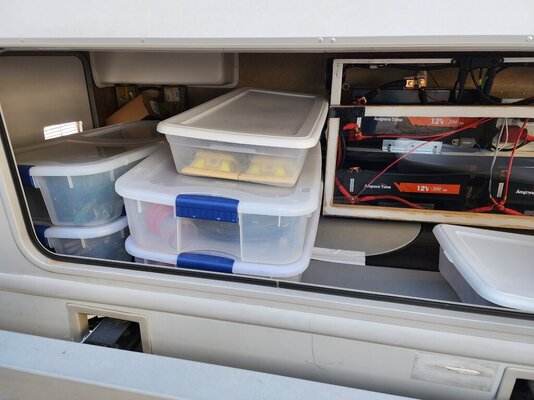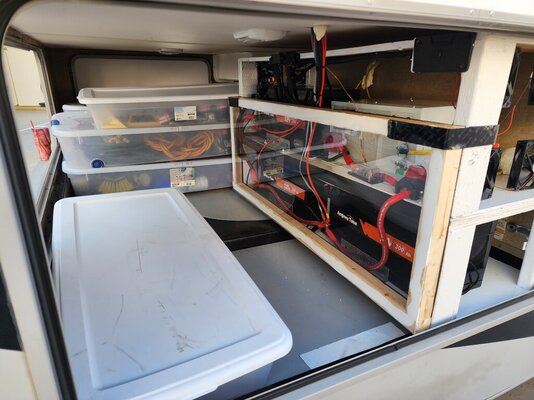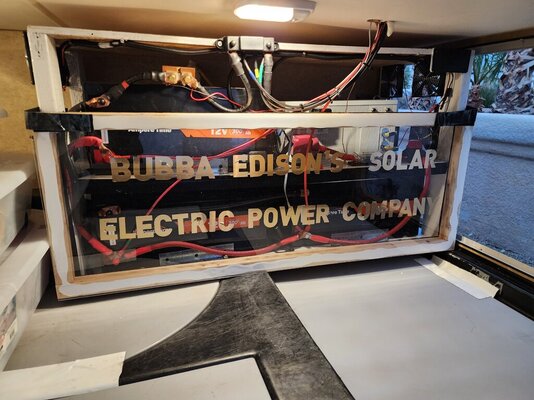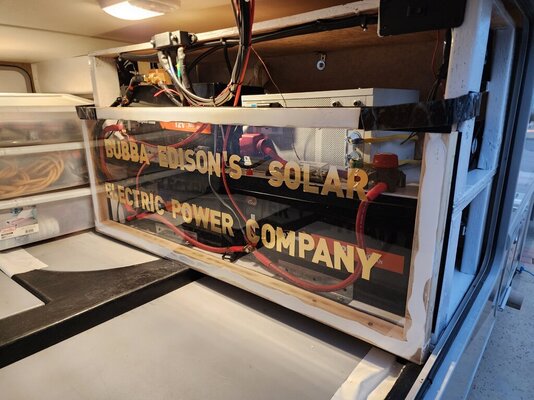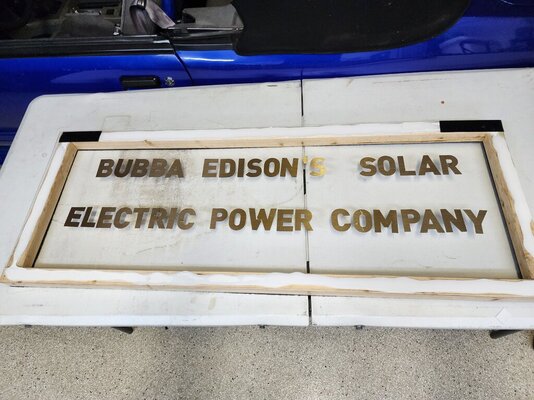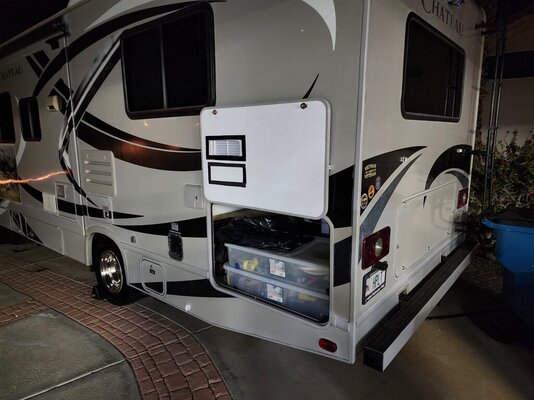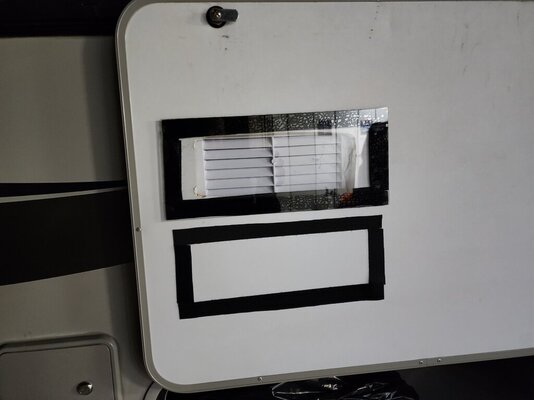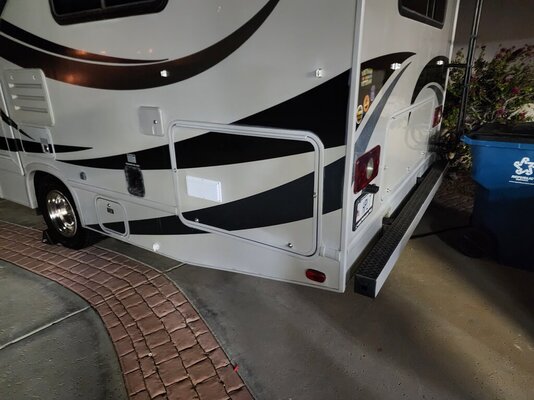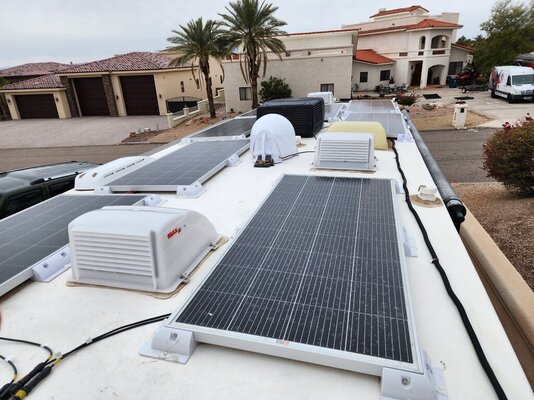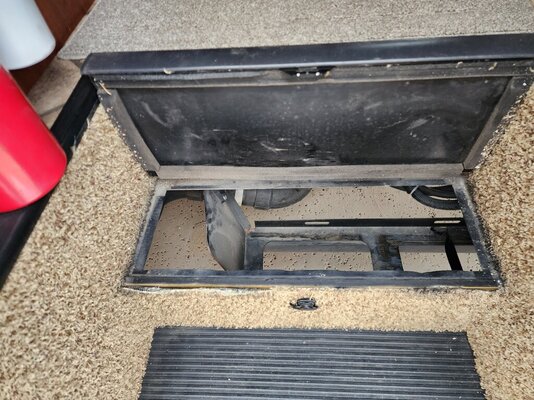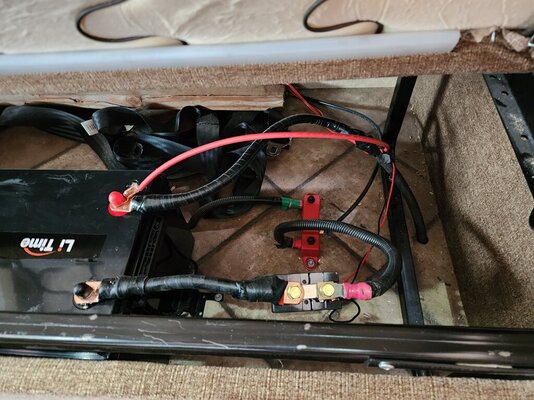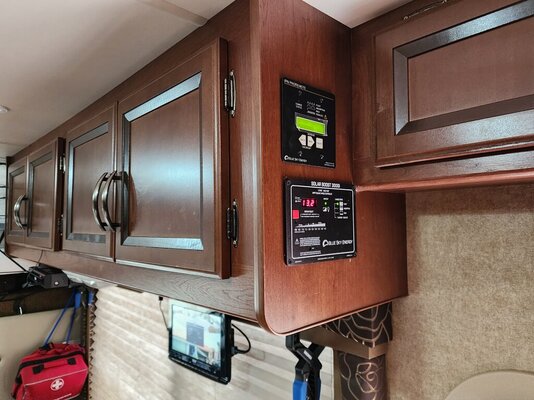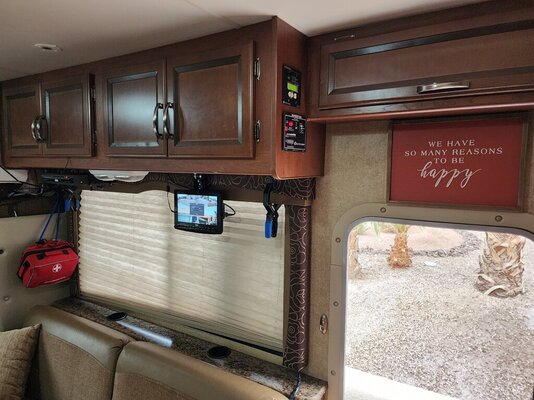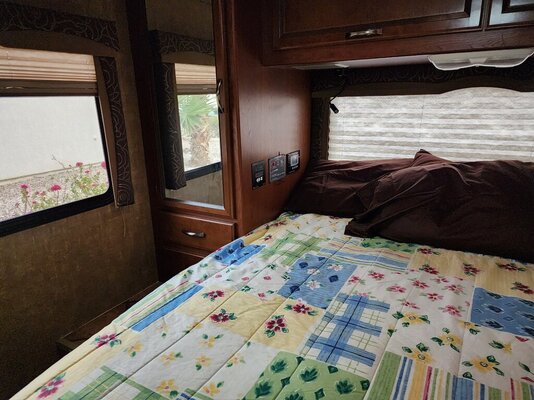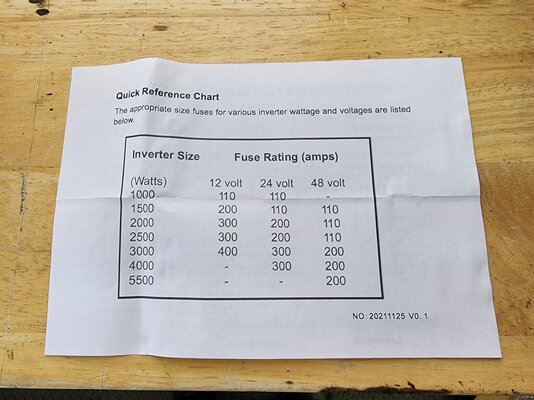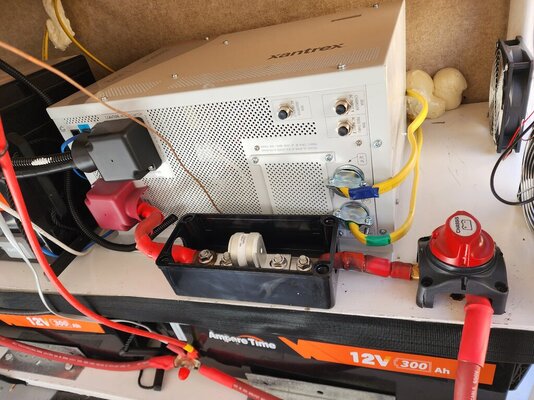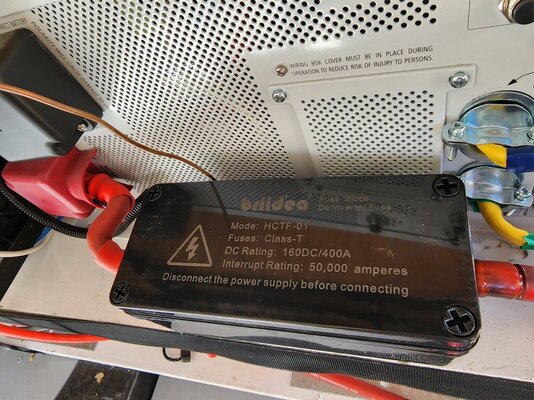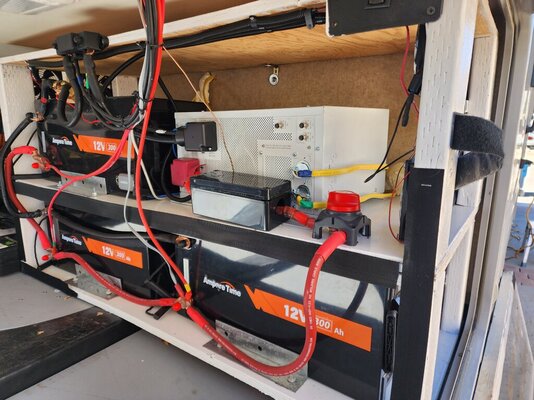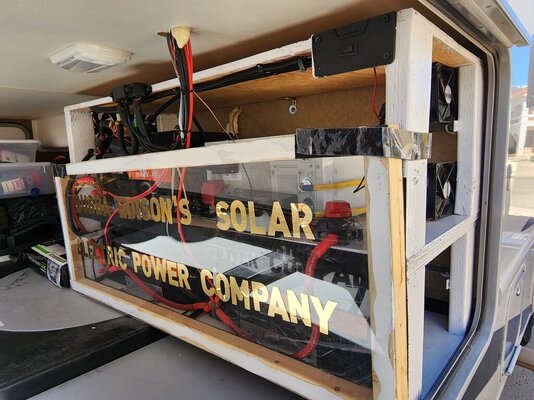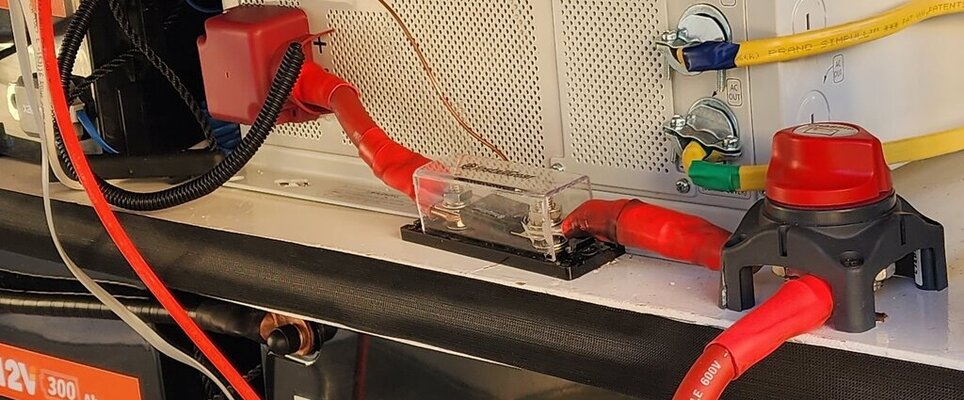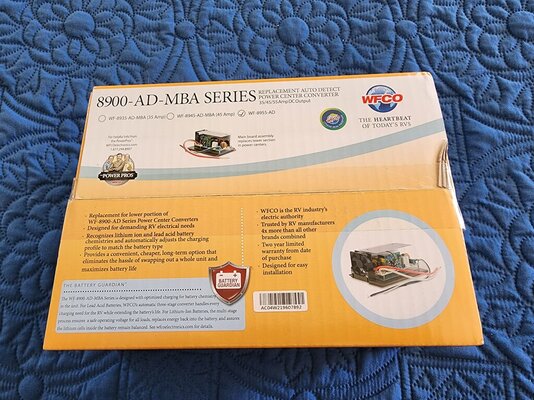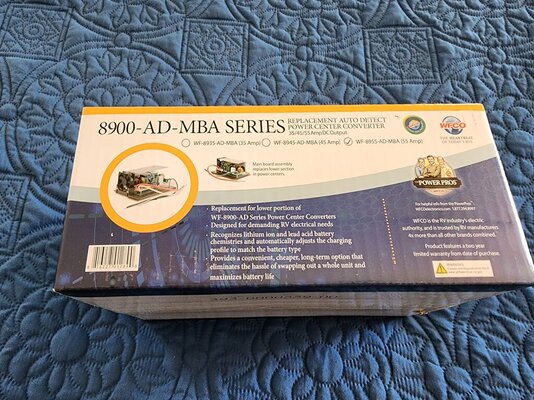HueyPilotVN
Well-known member
Final Pictures:
I put the finishing touches on the project.
Here are some pictures.
I attached the Lexan Safety Panel in place.
It is attached with industrial grade Velcro on the back. I also added additional straps on the top sides to make sure that it stays attached. After pulling off the protective plastic it really shows off the shelves.
I think that I will call it the "Bubba Edison Electric Company". All it really does is that it provides lots of 110 AC to the main panel, mostly from Solar.
It is too cool today to do a good test of the run time using the air conditioner.
You can see half of the cooling fans and one of the vents.
The Master controller and system monitors are mounted next to the bed.
The Solar charge controllers panel mounting system looks kind of messy but there is a method to the madness. The entire panel is mounted on a "J channel" to the closet wall. I can remove it to do any work on it. The is why I have the extra cable length that folds out of the way.
The charge controllers have circuit breakers on the input from the panels and fuses on the output to the batteries.
I put the finishing touches on the project.
Here are some pictures.
I attached the Lexan Safety Panel in place.
It is attached with industrial grade Velcro on the back. I also added additional straps on the top sides to make sure that it stays attached. After pulling off the protective plastic it really shows off the shelves.
I think that I will call it the "Bubba Edison Electric Company". All it really does is that it provides lots of 110 AC to the main panel, mostly from Solar.
It is too cool today to do a good test of the run time using the air conditioner.
You can see half of the cooling fans and one of the vents.
The Master controller and system monitors are mounted next to the bed.
The Solar charge controllers panel mounting system looks kind of messy but there is a method to the madness. The entire panel is mounted on a "J channel" to the closet wall. I can remove it to do any work on it. The is why I have the extra cable length that folds out of the way.
The charge controllers have circuit breakers on the input from the panels and fuses on the output to the batteries.
Attachments
-
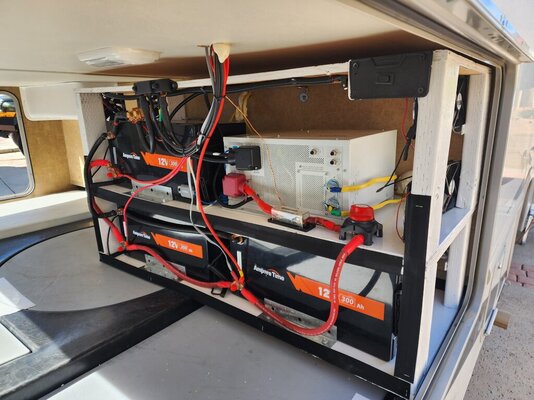 20221026_123223.jpg151.8 KB · Views: 32
20221026_123223.jpg151.8 KB · Views: 32 -
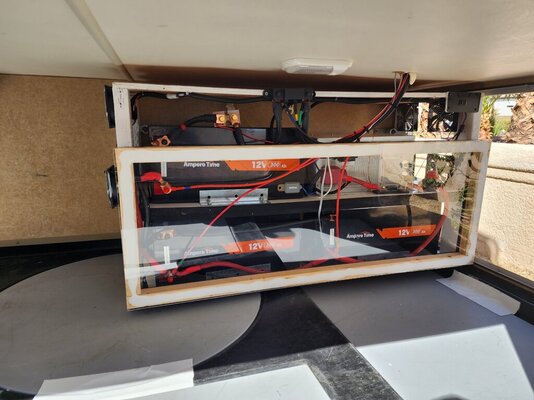 20221026_123455.jpg129.3 KB · Views: 29
20221026_123455.jpg129.3 KB · Views: 29 -
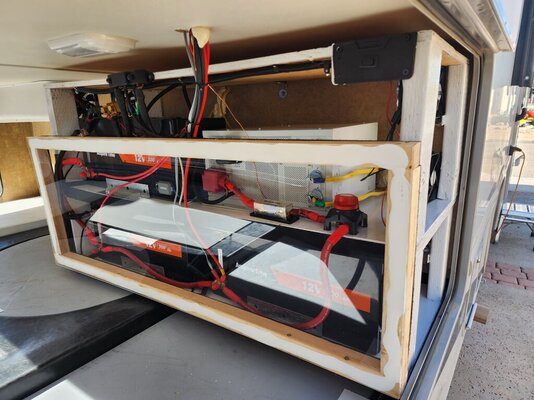 20221026_123542.jpg149.6 KB · Views: 29
20221026_123542.jpg149.6 KB · Views: 29 -
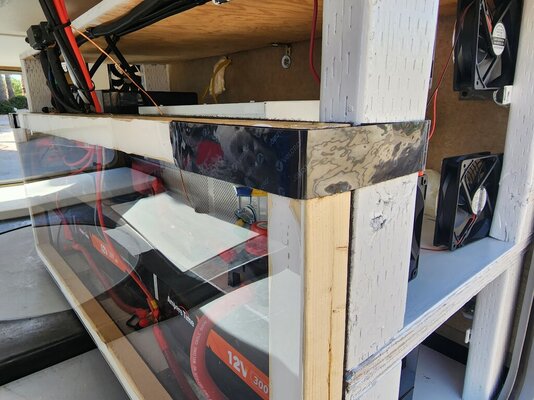 20221026_125216.jpg151.8 KB · Views: 30
20221026_125216.jpg151.8 KB · Views: 30 -
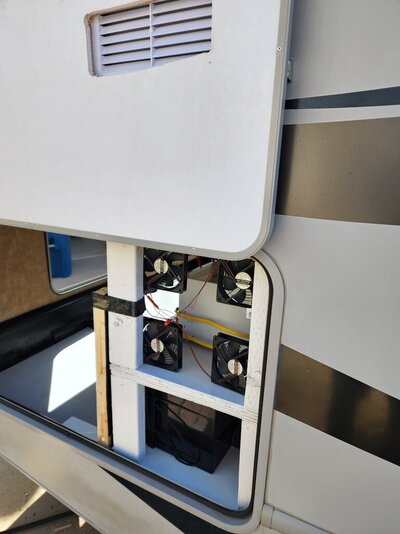 20221026_125429.jpg92.9 KB · Views: 30
20221026_125429.jpg92.9 KB · Views: 30 -
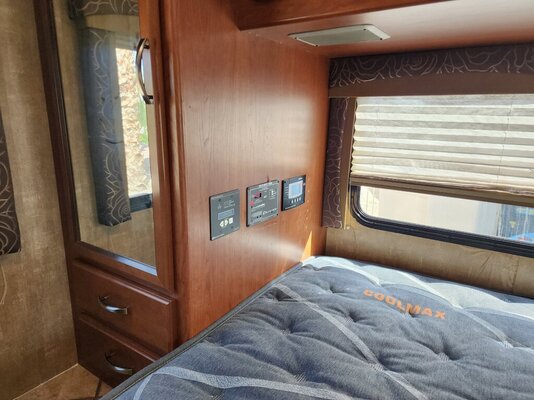 20221026_125531.jpg152.5 KB · Views: 30
20221026_125531.jpg152.5 KB · Views: 30 -
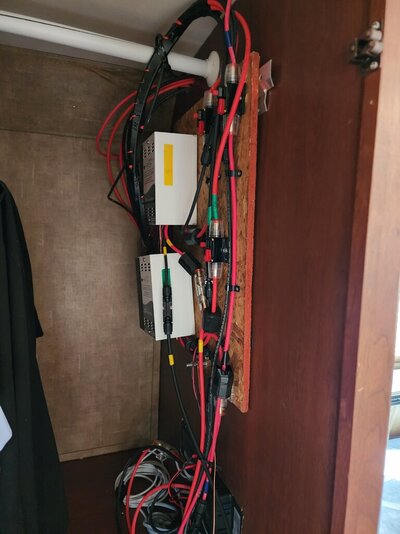 20221026_125805.jpg104.6 KB · Views: 30
20221026_125805.jpg104.6 KB · Views: 30 -
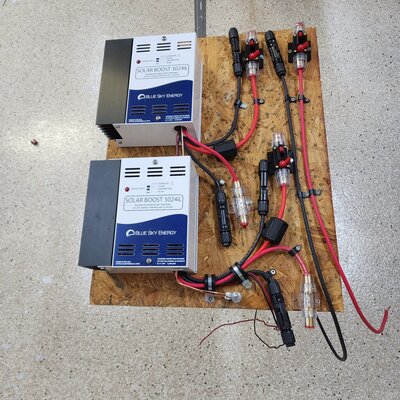 20220917_182108.jpg318 KB · Views: 33
20220917_182108.jpg318 KB · Views: 33
Last edited:

